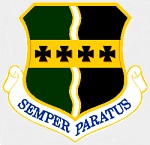Hobby Master HA6906 USAF Lockheed U-2S "Dragon Lady" Reconnaissance Aircraft - 80-1083, 9th Reconnaissance Wing, Fairford AFB, England, 2022 (1:72 Scale)
"Mr. Chairman, on May 1 the Soviet Government captured, 1300 miles inside the boundaries of the Russian empire, an American plane, operated by an American pilot, under the direction and control of the U.S. Central Intelligence Agency, and is now holding both the plane and the pilot. The plane was on an espionage mission ... The activity ... [was] under the aegis of the Commander in Chief of the Armed Forces of the United States, for whom all members of the subcommittee have the highest regard and in whose military capacity they have the utmost confidence."
- House Appropriations Chair Clarence Cannon, April 1960
 The Lockheed U-2, nicknamed "Dragon Lady", is an American single-jet engine, high altitude reconnaissance aircraft operated by the United States Air Force (USAF) and previously flown by the Central Intelligence Agency (CIA). It provides day and night, high-altitude (70,000 feet, 21,300 meters), all-weather intelligence gathering.
The Lockheed U-2, nicknamed "Dragon Lady", is an American single-jet engine, high altitude reconnaissance aircraft operated by the United States Air Force (USAF) and previously flown by the Central Intelligence Agency (CIA). It provides day and night, high-altitude (70,000 feet, 21,300 meters), all-weather intelligence gathering.
Lockheed Corporation originally proposed it in 1953, it was approved in 1954, and its first test flight was in 1955. It was flown during the Cold War over the Soviet Union, China, Vietnam, and Cuba. In 1960, Gary Powers was shot down in a CIA U-2A over the Soviet Union by a surface-to-air missile (SAM). Major Rudolf Anderson Jr. was shot down in a U-2 during the Cuban Missile Crisis in 1962.
U-2s have taken part in post-Cold War conflicts in Afghanistan and Iraq, and supported several multinational NATO operations. The U-2 has also been used for electronic sensor research, satellite calibration, scientific research, and communications purposes. The U-2 is one of a handful of aircraft types to have served the USAF for over 50 years, along with the Boeing B-52 and Boeing KC-135. The newest models (TR-1, U-2R, U-2S) entered service in the 1980s, and the latest model, the U-2S, had a technical upgrade in 2012.
Pictured here is a gorgeous 1:72 scale diecast replica of a United States USAF Lockheed U-2S "Dragon Lady" Reconnaissance Aircraft that was attached to the 9th Reconnaissance Wing, then deployed to Fairford AFB, England, during the 2022.
Pre-order! Ship Date: March 2025.
Dimensions:
Wingspan: 17-1/4-inches
Length: 10-1/2-inches
Release Date: ?
 Historical Account: "Ready for Retirement" - In late 2014, Lockheed Martin proposed an unmanned U-2 version with greater payload capability, but the concept did not gain traction with the USAF. In early 2015, the USAF was directed to restart modest funding for the U-2 for operations and research, development, and procurement through to FY 2018. The former head of the USAF Air Combat Command, Gen. Mike Hostage helped extend the U-2S to ensure commanders receive sufficient intelligence, surveillance and reconnaissance (ISR) coverage; stating "it will take eight years before the RQ-4 Global Hawk fleet can support 90% of the coverage of the U-2 fleet." In 2015, the RQ-4 was planned to replace the U-2 by 2019, though Lockheed states the U-2 can remain viable until 2050. As of January 2018, the U.S. Air Force budget for 2018 had indefinitely postponed the retirement of the U-2. In February 2020, the U.S. Air Force submitted budget documents with confusing language suggesting that it could begin retiring U-2s in 2025 but clarified afterwards that no retirement is planned.
Historical Account: "Ready for Retirement" - In late 2014, Lockheed Martin proposed an unmanned U-2 version with greater payload capability, but the concept did not gain traction with the USAF. In early 2015, the USAF was directed to restart modest funding for the U-2 for operations and research, development, and procurement through to FY 2018. The former head of the USAF Air Combat Command, Gen. Mike Hostage helped extend the U-2S to ensure commanders receive sufficient intelligence, surveillance and reconnaissance (ISR) coverage; stating "it will take eight years before the RQ-4 Global Hawk fleet can support 90% of the coverage of the U-2 fleet." In 2015, the RQ-4 was planned to replace the U-2 by 2019, though Lockheed states the U-2 can remain viable until 2050. As of January 2018, the U.S. Air Force budget for 2018 had indefinitely postponed the retirement of the U-2. In February 2020, the U.S. Air Force submitted budget documents with confusing language suggesting that it could begin retiring U-2s in 2025 but clarified afterwards that no retirement is planned.
On September 20th, 2016, a TU-2S trainer crashed upon takeoff from Beale Air Force Base, killing one pilot and injuring the other.
In early August 2018, NASA flew two missions using infrared sensors to map the Mendocino Complex Fire. The flights used the Moderate Resolution Imaging Spectroradiometer (MODIS) and Advanced Spaceborne Thermal Emission and Reflection Radiometer (ASTER) satellite instruments.
In 2020, the U-2 made history as the first military aircraft to integrate Artificial Intelligence on a mission. The AI program, code-named ARTUμ, was developed by the U-2 Federal Laboratory.
In the 2023 Chinese balloon incident, the U.S. Air Force used U-2 aircraft to monitor a Chinese balloon that crossed the United States and Canada. U-2 flights confirmed the balloon's surveillance package was outfitted with multiple antennas capable of conducting signals intelligence collection operations and that the craft had large solar panels to power them.


